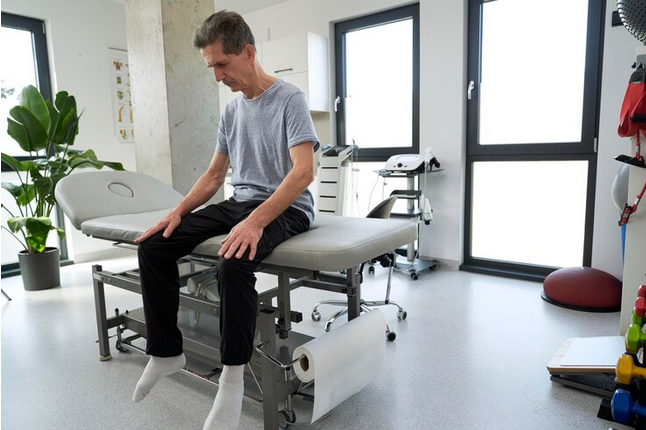Introduction
Chiropractic traction tables play a crucial role in the practice of spinal decompression therapy. This non-surgical treatment option is designed to alleviate pain and promote healing in individuals suffering from conditions such as herniated discs, degenerative disc disease, and spinal stenosis. In this article, we will delve into the role of chiropractic traction table in spinal decompression, exploring how they work and the benefits they offer to patients seeking relief from spinal conditions.
Understanding Spinal Decompression
Spinal decompression is a therapeutic technique that involves gently stretching the spine to relieve pressure on the discs and nerves. By creating negative pressure within the discs, spinal decompression promotes the retraction of herniated or bulging discs, allowing for improved blood flow, nutrient exchange, and the reduction of pain. Chiropractic traction tables are an essential tool used in the process of spinal decompression therapy.
How Chiropractic Traction Tables Work
Chiropractic traction tables are specifically designed to provide controlled and targeted stretching forces to the spine. These tables utilize a combination of mechanical and computerized systems to deliver precise traction and decompression. Here's a breakdown of how chiropractic traction tables work:
- Patient Positioning: The patient is positioned on the chiropractic traction table, either lying face-up or face-down, depending on the area of treatment.
- Secure Harness Attachment: A secure harness is attached to the patient's pelvis or trunk, depending on the targeted treatment area. This harness is connected to the traction table and is used to create the stretching force.
- Computerized Traction Control: Modern chiropractic traction tables are equipped with computerized traction control systems. These systems allow the chiropractor to customize the amount of force and the angle of traction applied to the spine, ensuring a safe and effective treatment.
- Cyclic Distraction: The chiropractic traction table applies a cyclic distraction force to the spine. This force gently stretches the vertebrae, creating negative pressure within the discs. As a result, herniated or bulging discs may retract, relieving pressure on the nerves and reducing pain.
- Treatment Duration: Each session of spinal decompression therapy typically lasts between 20 to 45 minutes, depending on the patient's condition and the recommended treatment protocol. Multiple sessions over several weeks may be necessary to achieve optimal results.
Benefits of Chiropractic Traction Tables in Spinal Decompression
Chiropractic traction tables offer several benefits in the practice of spinal decompression therapy. Here are some of the key advantages they provide:
- Precise and Controlled Treatment: Chiropractic traction tables allow for precise control over the amount of traction applied to the spine. This ensures that the treatment is tailored to the individual patient's needs, maximizing its effectiveness and safety.
- Non-Invasive and Non-Surgical: Spinal decompression therapy using chiropractic traction tables is a non-invasive and non-surgical treatment option. It provides a conservative approach for individuals who want to avoid surgery or have not found relief with other conservative treatments.
- Pain Relief: By relieving pressure on the discs and nerves, spinal decompression therapy using chiropractic traction tables can significantly reduce pain associated with spinal conditions such as herniated discs, degenerative disc disease, and spinal stenosis.
- Improved Function and Mobility: Spinal decompression therapy can improve spinal function and mobility. By reducing pressure on the discs and nerves, it allows for better range of motion and facilitates the body's natural healing processes.
- Holistic Approach: Chiropractic traction tables are often used in conjunction with other chiropractic techniques and therapies, such as spinal adjustments and therapeutic exercises. This holistic approach addresses the underlying causes of spinal conditions and promotes overall wellness.
Conclusion
Chiropractic traction tables play a vital role in the practice of spinal decompression therapy. By providing controlled and targeted stretching forces to the spine, these tables help to alleviate pain, improve spinal function, and enhance the overall quality of life for patients. The non-invasive nature of spinal decompression therapy using chiropractic traction tables makes it an attractive treatment option for individuals seeking relief from spinal conditions without resorting to surgery.
If you are considering spinal decompression therapy, consult with a qualified chiropractor to determine if it is a suitable treatment option for your specific condition. They can assess your medical history, perform a thorough examination, and create a personalized treatment plan tailored to your needs.
FAQ
1.What conditions can be treated with spinal decompression therapy using chiropractic traction tables?
Spinal decompression therapy using chiropractic traction tables can be beneficial for individuals suffering from conditions such as herniated discs, degenerative disc disease, and spinal stenosis. By relieving pressure on the discs and nerves, this therapy can help alleviate pain and promote healing.
2. How long does each session of spinal decompression therapy typically last?
Each session of spinal decompression therapy using chiropractic traction tables usually lasts between 20 to 45 minutes. The duration may vary depending on the patient's condition and the recommended treatment protocol.
3. Is spinal decompression therapy using chiropractic traction tables a surgical procedure?
No, spinal decompression therapy using chiropractic traction tables is a non-invasive and non-surgical treatment option. It provides a conservative approach for individuals who want to avoid surgery or have not found relief with other conservative treatments.
4. Can spinal decompression therapy using chiropractic traction tables improve mobility?
Yes, spinal decompression therapy can improve spinal function and mobility. By reducing pressure on the discs and nerves, it allows for better range of motion and facilitates the body's natural healing processes.
5. Is spinal decompression therapy using chiropractic traction tables used in combination with other treatments?
Yes, chiropractic traction tables are often used in conjunction with other chiropractic techniques and therapies, such as spinal adjustments and therapeutic exercises. This holistic approach addresses the underlying causes of spinal conditions and promotes overall wellness.





Comments